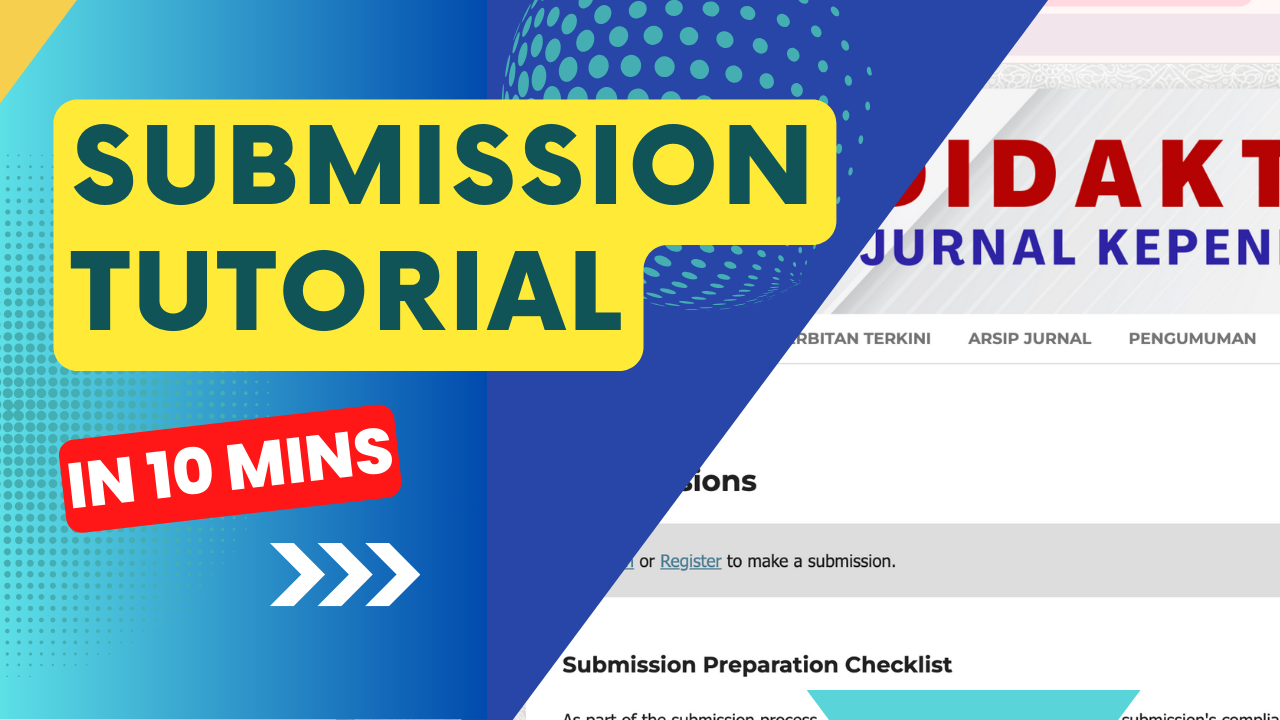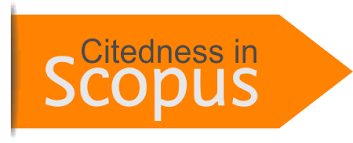English Speaking Skill through Rosetta Stone Application at Junior High School: Students’ Voices
Abstract
This study aims to explore the impact of utilizing the Rosetta stone application as a means to improve English speaking skills among second-grade junior high school students. The study employs a qualitative case study approach and data content analysis to delve deeply into the experiences and perceptions of the students regarding their English-speaking skill development through the application. Using a modified questionnaire and depth interviews, the researcher collected data through share the questionnaires to 34 students and interviews conducted with three participants. The results reveal that the majority of students express positive perceptions about the application's impact on English speaking abilities, citing improvements in confidence, vocabulary, accent, and overall learning experience. Overall, these findings underline the dynamic nature of language learning and the potential for continuous improvement in educational technology through targeted enhancements and further empirical exploration. These findings underscore the effectiveness of integrating technology like Rosetta Stone in language learning environments, offering diverse speaking practice opportunities, immersive learning experiences, and targeted feedback that contribute to overall language proficiency. The findings of this study could be useful for language learners who are seeking to improve their language skills as well as for educators and developers who are interested in creating effective language learning tools.
Metrics
References
Aldrich, C., & Clark, I. (2005). Learning by Doing: A Comprehensive Guide to Simulations, Computer Games and Pedagogy in e-Learning and Other Educational Experiences. 69–72.
Ardiningtyas, S. Y., Butarbutar, R., Weda, S., & Nur, S. (2023). Online scaffolding behavior for speaking EFL improvement: narrative inquiry issues. Interactive Learning Environments, 1–11. https://doi.org/10.1080/10494820.2023.2207608
Bajorek, J. P. (2017). L2 Pronunciation in CALL: The Unrealized Potential of Rosetta Stone, Duolingo, Babbel, and Mango Languages. Issues and Trends in Educational Technology, 5(2), 60–87. https://journals.uair.arizona.edu/index.php/itet/article/view/20140/21378
Chapel, J. M., Ritchey, M. D., Zhang, D., & Wang, G. (2017). Prevalence and Medical Costs of Chronic Diseases Among Adult Medicaid Beneficiaries. American Journal of Preventive Medicine, 53(6), S143–S154. https://doi.org/10.1016/j.amepre.2017.07.019
Chen, T.-Y., & Kuo, C.-H. (2012). A genre-based analysis of the information structure of master’s theses in applied linguistics. The Asian ESP Journal, 8(1), 24–52.
Coleman, J. A. (2009). Why the British do not learn languages: Myths and motivation in the United Kingdom. Language Learning Journal, 37(1), 111–127. https://doi.org/10.1080/09571730902749003
Dvořáková, K., Emmer, J., Janktová, R., & Klementová, K. (2021). From f2f to ert: University students’ perception of remote learning during the first covid-19 lockdown. Journal on Efficiency and Responsibility in Education and Science, 14(2), 89–100. https://doi.org/10.7160/eriesj.2021.140203
Elmahdi, I., Al-Hattami, A., & Fawzi, H. (2018). Using Technology for Formative Assessment to Improve Students’ Learning, Turkish Online Journal of Educational Technology - TOJET, 2018-Apr. TOJET: The Turkish Online Journal of Educational Technology, 17(2), 182–188. https://eric.ed.gov/?id=EJ1176157
Fiolita, V. (2022). THE STUDENTS’RESPONSE OF USING THE ROSETTA STONE APPLICATION ON SPEAKING SKILLS (A Case Study at Bimbel Rumah Pintar 2022). Universitas Pancasakti Tegal.
Firdaus, H., Laensadi, A. M., Matvayodha, G., Siagian, F. N., & Hasanah, I. A. (2022). Analisis Evaluasi Program Kurikulum 2013 dan Kurikulum Merdeka. Jurnal Pendidikan Dan Konseling, 4(4), 686–692. https://core.ac.uk/download/pdf/322599509.pdf
Fishman, J. A. (2012). The new linguistic order. Language and Linguistics in Context: Readings and Applications for Teachers, 3, 175–181. https://doi.org/10.4324/9780203929124
Gibbs, B., & ]. (2020). Critically Examining War : A Classroom Catch-22. Ohio Social Studies Review, 56(2).
Godwin-Jones, R. (2009). Emerging technologies speech tools and technologies. Language Learning and Technology, 13(3), 4–11.
Gomm, R. (2008). Social Research Methodology. Social Research Methodology. https://doi.org/10.1007/978-0-230-22911-2
Groff, J. (2013). Technology-rich innovative learning environments. Oecd.Org, 1–30.
Hanif. (2012). Using Rosetta Stone… Using Rosetta Stone Software As Media In Teaching English Vocabulary (An Experimental Study At SDN No. 02 Lhoksukon). Rosetta Stone Evaluation Report Resources., 24–36.
Hanifa, R. S., & Santoso, D. R. (2022). The Use of Rosetta Stone in Enhancing Junior High School Students’ Pronunciation. Ethical Lingua, 9(2), 836–845. https://doi.org/10.30605/25409190.448
Hz, B. I. R., & Daulay, E. (2021). Online Learning Media: English Education Department Students’ Perspective. Metathesis: Journal of English Language, Literature, and Teaching, 5(1), 50–64. https://doi.org/10.31002/metathesis.v5i1.3604 p-ISSN:
Ikonta, N. R., & Ugonna, N. C. (2015). The effect of Rosetta Stone (computer-assisted language learning) software on English as second language students’ proficiency in English language. African Educational Research Journal, 3(1), 69–79.
Jalkanen, J. (2015). Development of pedagogical design in technology-rich environments for language teaching and learning (J. S. in Humanities (ed.)). University Library of Jyväskylä Jyväskylä.
Jovanic, J., & Chiong, R. (2014). Technological and Social Environments for Interactive Learning. Informing Science Press.
Kessler, G. (2018). Technology and the future of language teaching. Foreign Language Annals, 51(1), 205–218. https://doi.org/10.1111/flan.12318
Kouhdast, A. M. K. (2023). Transformative Applications of Technology in English Language Education: A Literature Riview Over the Last Two Decades. Technology Assisted Language Education TALE, 1(3), 45–62. https://lilikmasrukhahmpd.gurusiana.id/article/2017/08/pembelajaran-bahasa-inggris-dengan-memanfaatkan-it-1251283?bima_access_status=not-logged%0Ahttps://publikasiilmiah.ums.ac.id/xmlui/handle/11617/9566
Lamb, M. (2017). The motivational dimension of language teaching. Language Teaching, 50(3), 301–346. https://doi.org/10.1017/S0261444817000088
Liando, N. V. F., Tatipang, D. P., Tamboto, G., Poluan, M., & Manuas, M. (2022). Pictures as a Learning Media in Teaching Vocabulary. Jurnal Ilmiah Universitas Batanghari Jambi, 22(3), 1944–1949.
Lord, G. (2016). Rosetta Stone for Language Learning: An Exploratory Study. IALLT Journal of Language Learning Technologies, 46(1), 1–35. https://doi.org/10.17161/iallt.v46i1.8552
Majumdar, S. (2015). Emerging Trends in ICT for Education & Training. Director General Asia & Pacific Region IVETA, 94–101. http://scholar.google.com/scholar?hl=en&btnG=Search&q=intitle:Pedagogic+Strategies+for+Using+ICT+to+Support+Subject+Teaching+and+Learning:+An+Analysis+Across+15+Case+Studies#0%5Cnhttp://scholar.google.com/scholar?hl=en&btnG=Search&q=intitle:Pedagogic+strate
Meri Aryani. (2022). The Use of Rosetta Stone in Improving Speaking Skill. Journal of Teaching English and Applied Linguistic, 1(1), 35–42. https://doi.org/10.56517/jteal.v1i1.5
Nalimova, S. S., Kondratev, V. M., Ryabko, A. A., Maksimov, A. I., & Moshnikov, V. A. (2020). Study of sensor properties of zinc oxide based nanostructures. Journal of Physics: Conference Series, 1658(1). https://doi.org/10.1088/1742-6596/1658/1/012033
Parkinson, R., Diffie, W., Fischer, M., & Simpson, R. S. (1999). No Title. Univ of California Press.
Purgina, M., Mozgovoy, M., & Blake, J. (2020). WordBricks: Mobile Technology and Visual Grammar Formalism for Gamification of Natural Language Grammar Acquisition. Journal of Educational Computing Research, 58(1), 126–159. https://doi.org/10.1177/0735633119833010
Rogerson-Revell, P. M. (2021). Computer-Assisted Pronunciation Training (CAPT): Current Issues and Future Directions. RELC Journal, 52(1), 189–205. https://doi.org/10.1177/0033688220977406
Saldaña, J. (n.d.). The Coding manual For Qualitative Researchers (J. Seaman (ed.)). SAGE Publications Ltd.
Schmid, K. (2012). The effectiveness of Rosetta Stone language learning software. Language Learning & Technology, 16(2), 9–28.
Song, C., Shin, S.-Y., & Shin, K.-S. (2023). Optimizing Foreign Language Learning in Virtual Reality: A Comprehensive Theoretical Framework Based on Constructivism and Cognitive Load Theory (VR-CCL). Applied Sciences, 13(23), 12557. https://doi.org/10.3390/app132312557
Soto, J. H. B., Ocampo, D. C. T., del Carmen Beltrán Colón, L., & Oropesa, A. V. (2020). Perceptions of immerseme virtual reality platform to improve english communicative skills in higher education. International Journal of Interactive Mobile Technologies, 14(7), 4–19. https://doi.org/10.3991/IJIM.V14I07.12181
Stepp, J. G. (2002). Student Perceptions on Language Learning in a Technological Environment: Implications For The New Millennium. Language Learning and Technology, 6(January), 165–180. http://llt.msu.edu/vol6num1/steppgreany/
Tayan, B. M. (2017). Students and Teachers’ Perceptions into the Viability of Mobile Technology Implementation to Support Language Learning for First Year Business Students in a Middle Eastern University. International Journal of Education and Literacy Studies, 5(2), 74. https://doi.org/10.7575/aiac.ijels.v.5n.2p.74
Yu, Z. (2022). Sustaining Student Roles, Digital Literacy, Learning Achievements, and Motivation in Online Learning Environments during the COVID-19 Pandemic. Sustainability (Switzerland), 14, 1–14. https://doi.org/10.3390/su14084388
Copyright (c) 2024 Anisah Firly Chaniago, Benni Ichsanda Rahman HZ

This work is licensed under a Creative Commons Attribution 4.0 International License.
Dengan mengirimkan naskah artikel, berarti penulis setuju dengan segala kebijakan yang ditetapkan oleh jurnal dan penerbit.
Penulis menyatakan bahwa:
- kebijakan ini telah diketahui dan disetujui bersama oleh semua penulis;
- naskah artikel belum dipublikasikan secara resmi sebelumnya di media ber-ISSN atau ber-ISBN yang terdaftar, kecuali dalam bentuk abstrak atau sebagai bagian dari materi kuliah, atau skripsi/tesis/disertasi yang tidak diterbitkan;
- naskah tidak sedang dalam proses editorial dan dipertimbangkan untuk publikasi di tempat lain;
- publikasi naskah ini telah disetujui oleh semua penulis, institusi afiliasi penulis, otoritas yang bertanggung jawab, dan lembaga di mana kegiatan telah dilakukan;
- naskah berisi materi yang aman dari pelanggaran hak cipta;
Perjanjian Hak Cipta dan Lisensi
- Penulis memiliki hak cipta dan hak kepemilikan lainnya yang terkait dengan artikel.
- Penulis memiliki hak dan diizinkan untuk menggunakan substansi artikel untuk karya-karya penulis berikutnya, termasuk untuk keperluan bahan/materi kuliah dan buku.
- Penulis menyerahkan hak publikasi pertama kepada jurnal dengan di bawah Lisensi Creative Commons (CC BY 4.0).
Pernyataan Lisensi CC BY 4.0
Anda diperbolehkan:
- Berbagi — menyalin dan menyebarluaskan kembali materi ini dalam bentuk atau format apapun;
- Adaptasi — menggubah, mengubah, dan membuat turunan dari materi ini untuk kepentingan apapun, termasuk kepentingan komersial.
Pemberi lisensi tidak dapat mencabut ketentuan di atas sepanjang Anda mematuhi ketentuan lisensi berikut ini.
- Atribusi — Anda harus mencantumkan nama yang sesuai, mencantumkan tautan terhadap lisensi, dan menyatakan bahwa telah ada perubahan yang dilakukan. Anda dapat melakukan hal ini dengan cara yang sesuai, namun tidak mengisyaratkan bahwa pemberi lisensi mendukung Anda atau penggunaan Anda.
- Tidak ada pembatasan tambahan — Anda tidak dapat menggunakan ketentuan hukum atau sarana kontrol teknologi yang secara hukum membatasi orang lain untuk melakukan hal-hal yang diizinkan lisensi ini.





.png)








